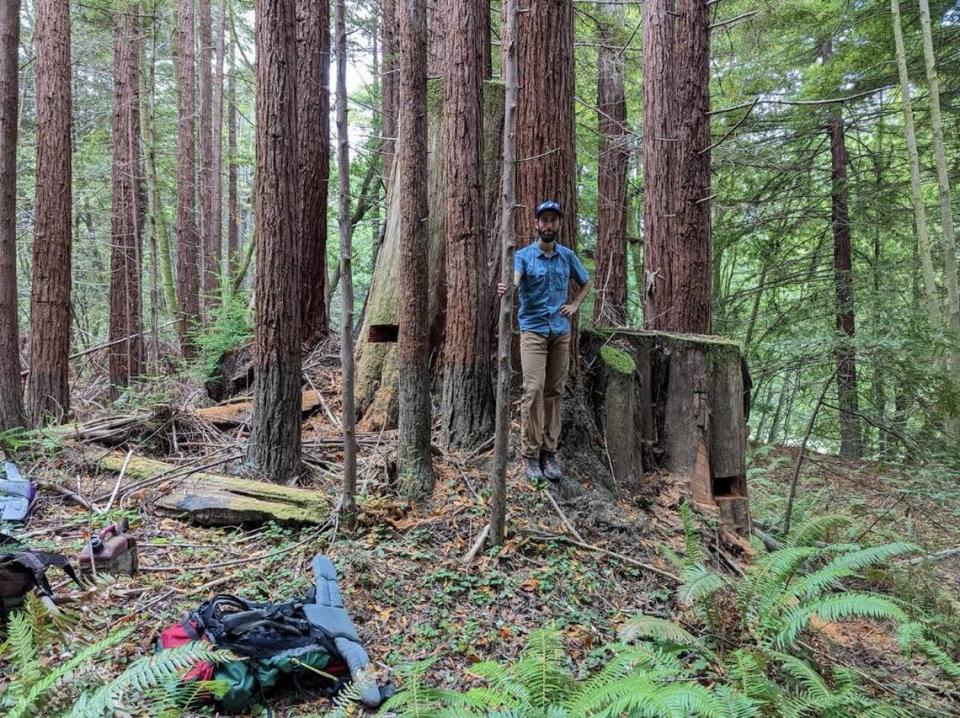Slices of redwood trees may hold clues about past earthquakes, researchers in CA say
Researchers with the United States Geological Survey and a California university have partnered up to use redwood tree stumps to better understand past earthquakes.
The team “collected slices from 23 redwood tree stumps along the north coast section of the San Andreas Fault” near Gualala, California, in August, according to a Sept. 23 news release by the USGS.
The researchers will look at the stumps that were initially cut down in the 19th and early 20th century, officials said. They believe by analyzing the tree’s rings, they can better understand the effects of earthquakes “prior to the magnitude 7.9 San Francisco earthquake in 1906.”
The team also plans to collect living samples of redwoods to compare those with the “two datasets to search for evidence of ... past San Andreas Fault earthquakes,” according to the news release.
The news release included photos of the team’s fieldwork, outlining the process of climbing the trees, cutting the stumps and preparing them for analysis.




The team consists of Belle Philibosian, Nick Cunetta and Austin Elliot, researchers who are a part of the USGS Earthquake Science Center, and Allyson Carroll, a researcher at Cal Poly Humboldt, according to officials. The team plans to analyze the tree rings at Humboldt.
The San Andreas Fault runs about 750 miles through California. Gualala is about 160 miles northwest of Sacramento.

 Yahoo Movies
Yahoo Movies 
